模块6 Unit 16 Stories Lesson 1 课件(31张)
文档属性
| 名称 | 模块6 Unit 16 Stories Lesson 1 课件(31张) |  | |
| 格式 | zip | ||
| 文件大小 | 1004.6KB | ||
| 资源类型 | 教案 | ||
| 版本资源 | 北师大版 | ||
| 科目 | 英语 | ||
| 更新时间 | 2019-07-10 07:03:03 | ||
图片预览


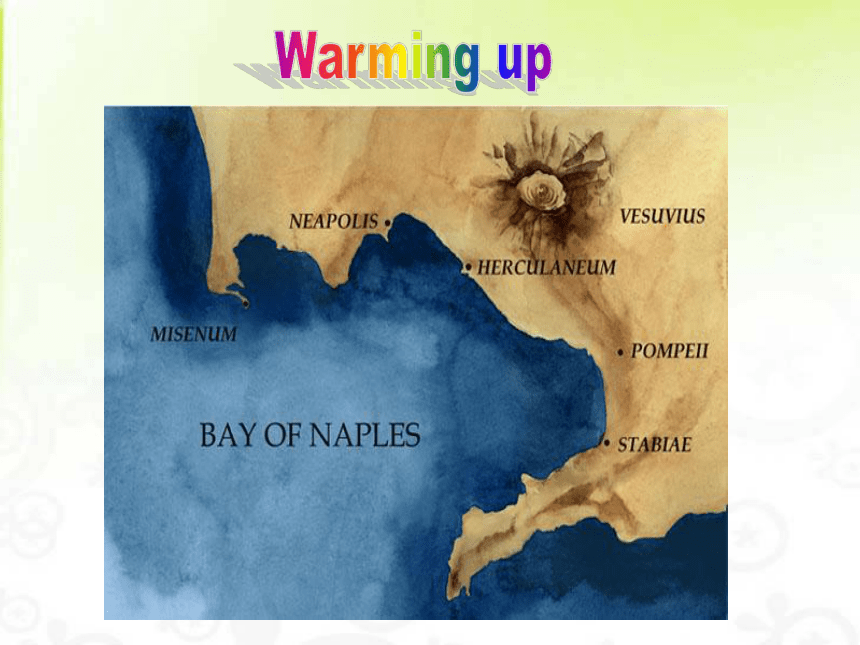
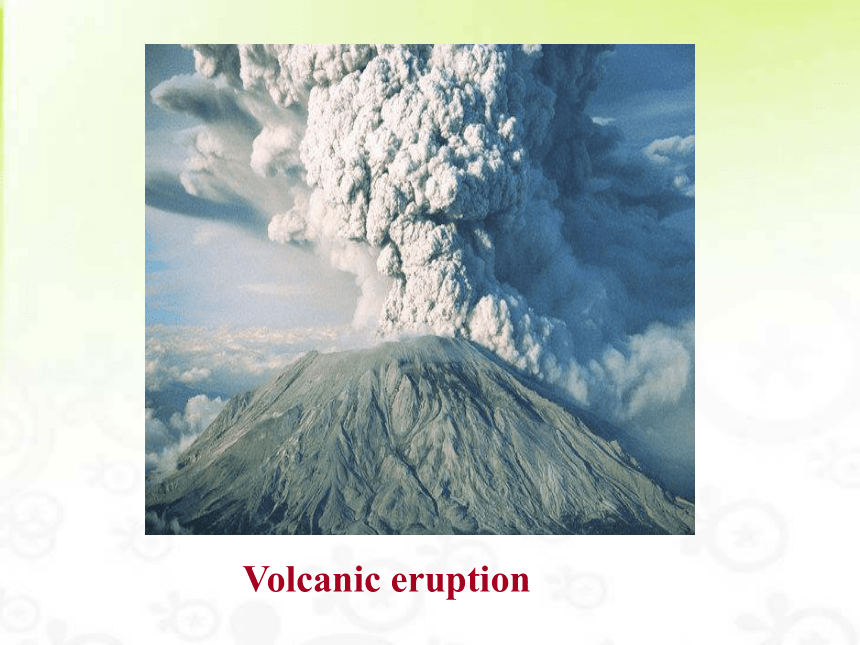
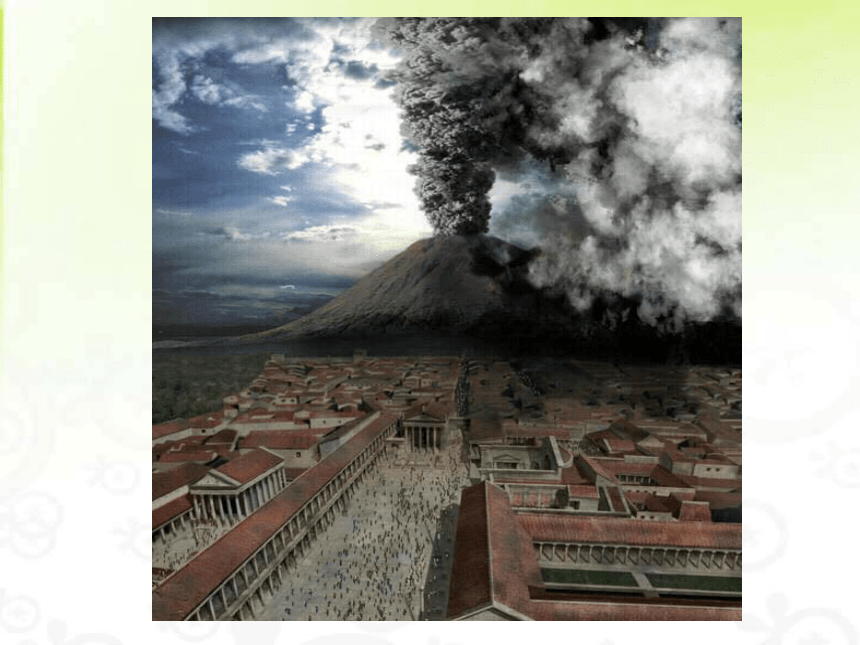
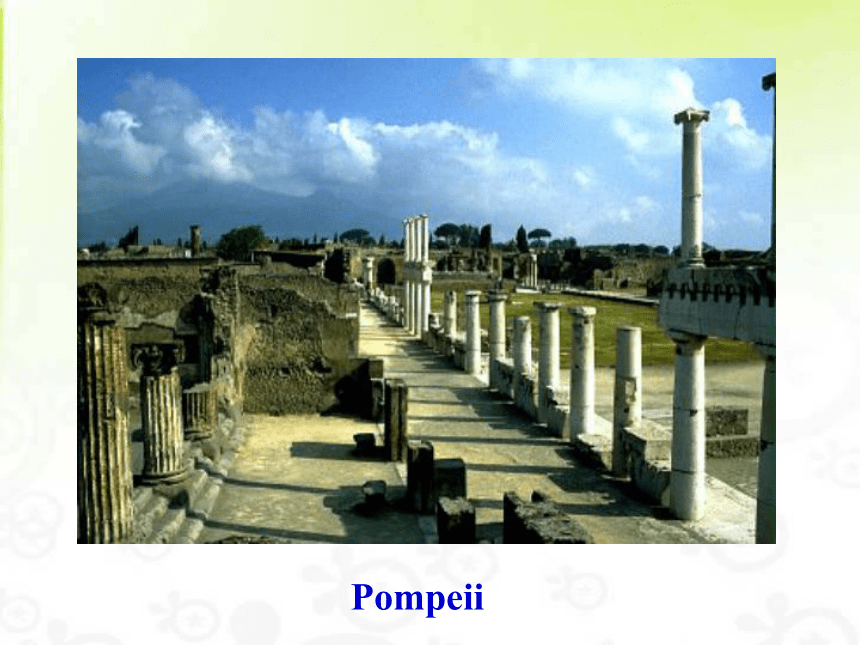
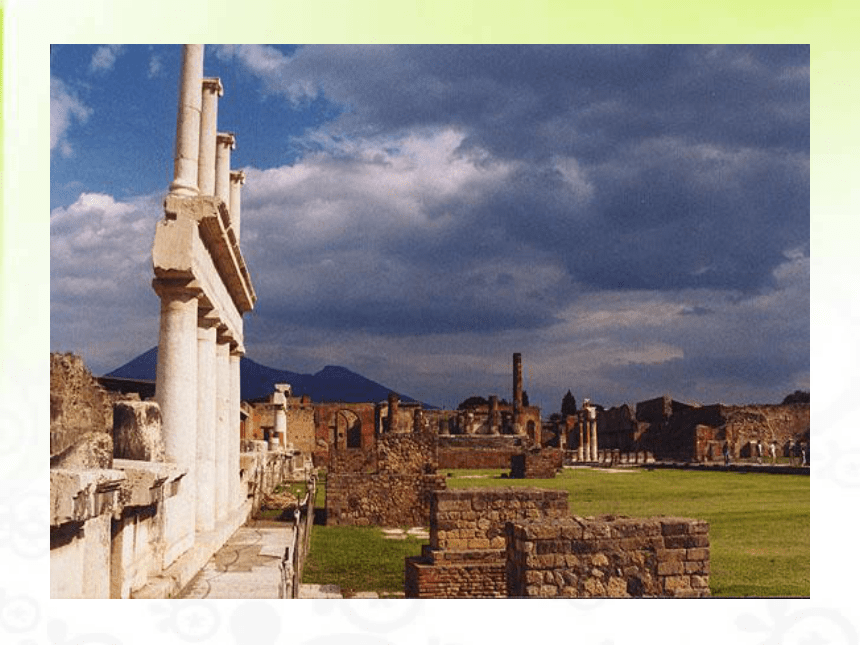
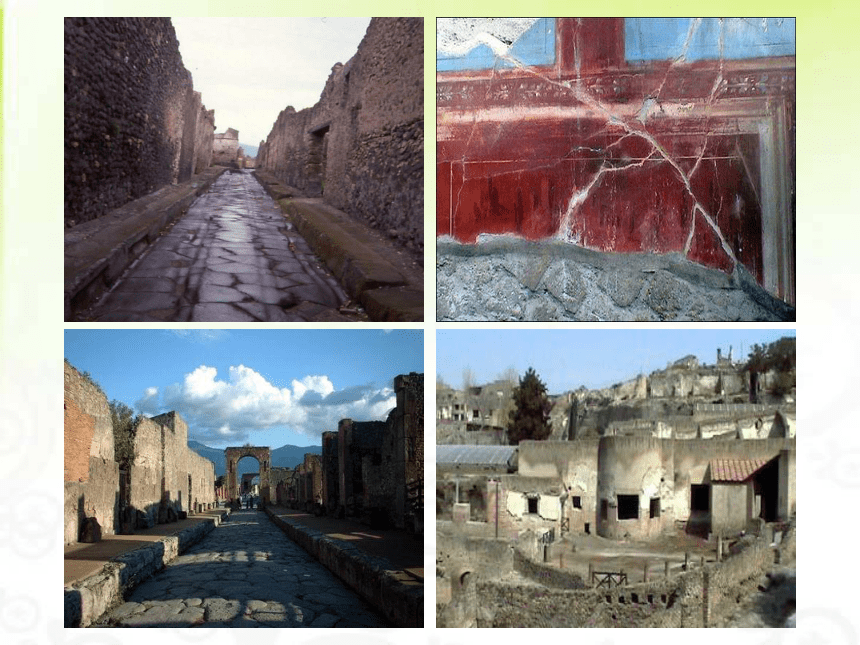
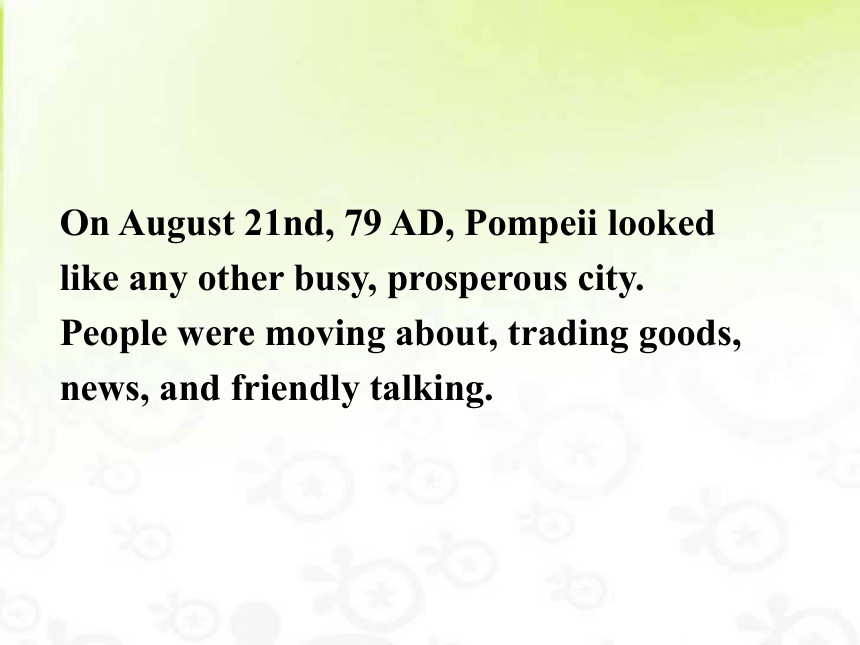
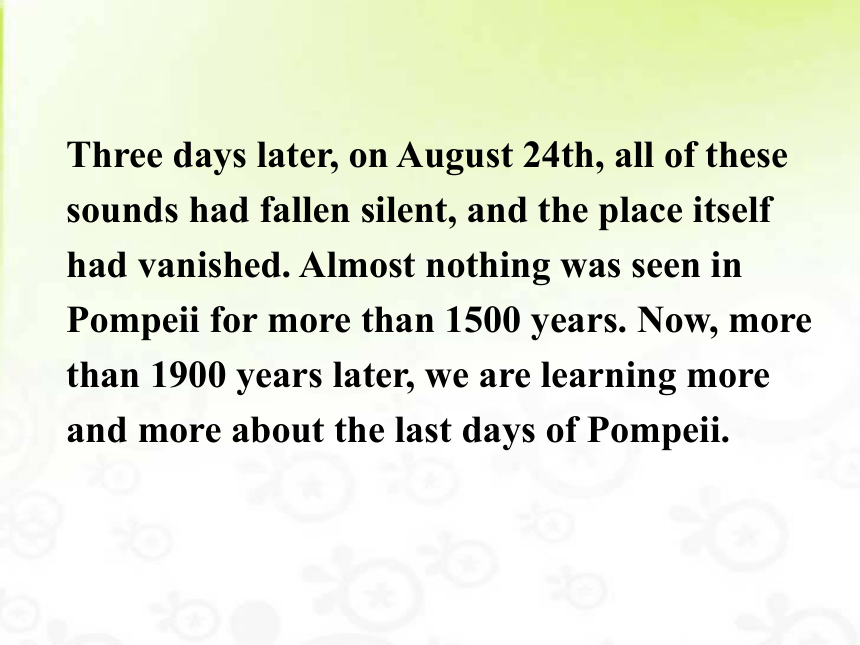
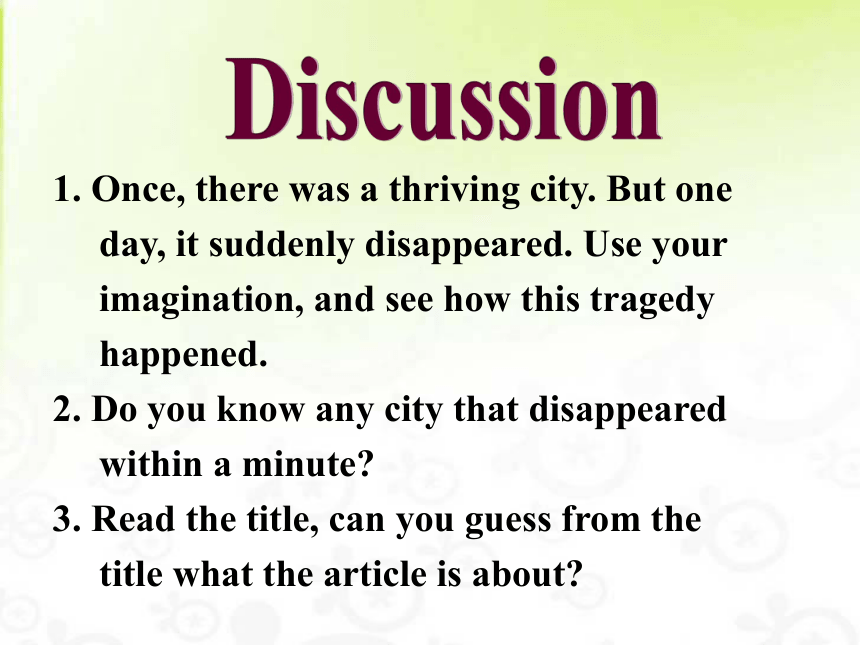
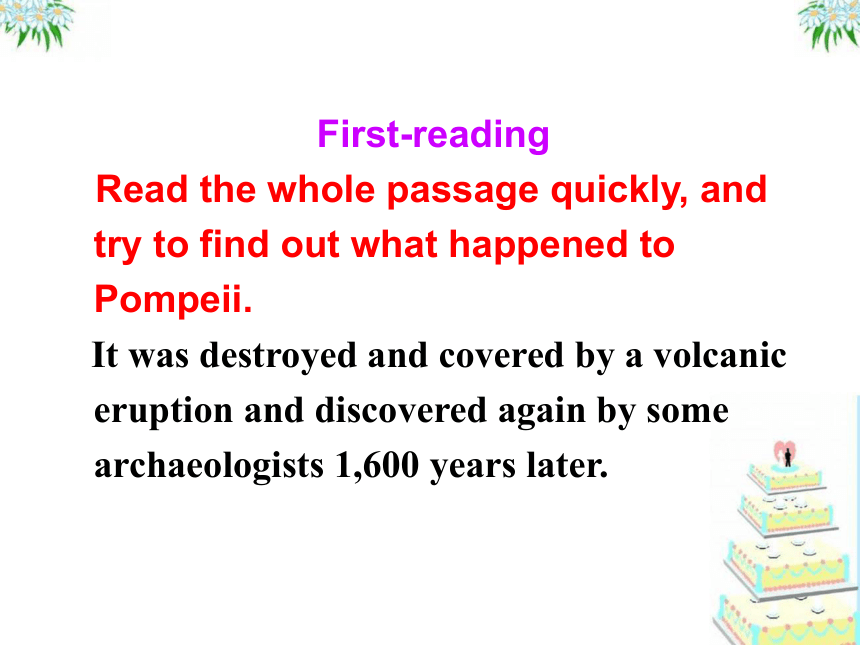
文档简介
课件31张PPT。Unit 16 StoriesLesson 1
Stories from HistoryWarming upVolcanic eruptionPompeiiOn August 21nd, 79 AD, Pompeii looked like any other busy, prosperous city. People were moving about, trading goods, news, and friendly talking.Three days later, on August 24th, all of these sounds had fallen silent, and the place itself had vanished. Almost nothing was seen in Pompeii for more than 1500 years. Now, more than 1900 years later, we are learning more and more about the last days of Pompeii.1. Once, there was a thriving city. But one day, it suddenly disappeared. Use your imagination, and see how this tragedy happened.
2. Do you know any city that disappeared within a minute?
3. Read the title, can you guess from the title what the article is about?DiscussionFirst-reading
Read the whole passage quickly, and try to find out what happened to Pompeii.
It was destroyed and covered by a volcanic eruption and discovered again by some archaeologists 1,600 years later.Second-reading
Write down the things in connection with the following numbers.
August, 24th, 79 AD:
The eruption had occurred and destroyed the whole city. 1,600:
More than 1,600 years later, some scientists found the lost towns that had been buried under the ashes. 1748:
By 1748, scientists had found an awesome historical site. 250:
More than 250 years after scientists found the city, thousands of tourists and hundreds of scientists visit Pompeii every year to learn more about the ancient world.Go through the whole passage, and find out what the following people did.
Pliny:
People in Pompeii:
scientists:Third-reading: Note-takinga Roman writer
wrote about a terrible volcanic eruption
described a cloud coming down the mountain, blocking out the sun and burying everything in its path, including whole villages and towns.
Those sad events left a deep impression on Pliny.Pliny:People in Pompeii:disappeared under the ashes
were gradually forgotten by the worldPeople gathered together for protection in their last hours of life.One person, sitting alone, looks like he is praying.Another man, lying on his side, looks as if he is trying to get up.found the lost towns
found an awesome historical site and started to dig out the ancient city of Pompeii
hundreds of scientists visit Pompeii every year to learn more about the ancient worldThose scientists:Read the article and answer the questions1. What is the article about?
It is about a city called Pompeii. It was buried by a volcanic eruption in 79 AD but scientists found it again 1,600 years later. Post-reading2. Why does the article describe Pompeii as a “time capsule”?
Because the volcanic eruption preserved buildings, objects and even impressions of people from the time.
3. Who wrote about the eruption of Vesuvius?
Roman writer Pliny wrote about the eruption of Vesuvius. 4. What had Pompeii been like before the eruption?
Before the eruption, Pompeii had been a booming Roman city with temples, markets, restaurants, and theatres.5. What can you see if you walk in the streets of Pompeii today?
you can see ancient architecture, statues, decorated walls, objects of the time and impressions of people in their last hours of life.Changes of Pompeii City:
A thriving Roman city with
temples, markets, restaurants and
theatres, works of art on walls;destroyed and covered by a terrible
volcanic eruption; people
disappeared and forgotten by the
world; the locations of the buried
towns and villages were lost.discovered by some scientists;
visited by tourists and scientists
every year.HomeworkFinish 4 -7 on Page 7.Thank you!
Stories from HistoryWarming upVolcanic eruptionPompeiiOn August 21nd, 79 AD, Pompeii looked like any other busy, prosperous city. People were moving about, trading goods, news, and friendly talking.Three days later, on August 24th, all of these sounds had fallen silent, and the place itself had vanished. Almost nothing was seen in Pompeii for more than 1500 years. Now, more than 1900 years later, we are learning more and more about the last days of Pompeii.1. Once, there was a thriving city. But one day, it suddenly disappeared. Use your imagination, and see how this tragedy happened.
2. Do you know any city that disappeared within a minute?
3. Read the title, can you guess from the title what the article is about?DiscussionFirst-reading
Read the whole passage quickly, and try to find out what happened to Pompeii.
It was destroyed and covered by a volcanic eruption and discovered again by some archaeologists 1,600 years later.Second-reading
Write down the things in connection with the following numbers.
August, 24th, 79 AD:
The eruption had occurred and destroyed the whole city. 1,600:
More than 1,600 years later, some scientists found the lost towns that had been buried under the ashes. 1748:
By 1748, scientists had found an awesome historical site. 250:
More than 250 years after scientists found the city, thousands of tourists and hundreds of scientists visit Pompeii every year to learn more about the ancient world.Go through the whole passage, and find out what the following people did.
Pliny:
People in Pompeii:
scientists:Third-reading: Note-takinga Roman writer
wrote about a terrible volcanic eruption
described a cloud coming down the mountain, blocking out the sun and burying everything in its path, including whole villages and towns.
Those sad events left a deep impression on Pliny.Pliny:People in Pompeii:disappeared under the ashes
were gradually forgotten by the worldPeople gathered together for protection in their last hours of life.One person, sitting alone, looks like he is praying.Another man, lying on his side, looks as if he is trying to get up.found the lost towns
found an awesome historical site and started to dig out the ancient city of Pompeii
hundreds of scientists visit Pompeii every year to learn more about the ancient worldThose scientists:Read the article and answer the questions1. What is the article about?
It is about a city called Pompeii. It was buried by a volcanic eruption in 79 AD but scientists found it again 1,600 years later. Post-reading2. Why does the article describe Pompeii as a “time capsule”?
Because the volcanic eruption preserved buildings, objects and even impressions of people from the time.
3. Who wrote about the eruption of Vesuvius?
Roman writer Pliny wrote about the eruption of Vesuvius. 4. What had Pompeii been like before the eruption?
Before the eruption, Pompeii had been a booming Roman city with temples, markets, restaurants, and theatres.5. What can you see if you walk in the streets of Pompeii today?
you can see ancient architecture, statues, decorated walls, objects of the time and impressions of people in their last hours of life.Changes of Pompeii City:
A thriving Roman city with
temples, markets, restaurants and
theatres, works of art on walls;destroyed and covered by a terrible
volcanic eruption; people
disappeared and forgotten by the
world; the locations of the buried
towns and villages were lost.discovered by some scientists;
visited by tourists and scientists
every year.HomeworkFinish 4 -7 on Page 7.Thank you!
